Details about webhooks
Tallyfy webhooks are automated messages sent to external systems when specific events occur in your workflows. They transmit JSON data packets to predefined URLs, enabling real-time integration with other applications without manual intervention. This guide explains how to configure and implement webhooks in Tallyfy and avoid the common pitfalls that trip people up.
Tallyfy offers two webhook configuration levels:
Template-level webhooks trigger when any step within a process is completed. They also trigger when a process is initially launched, before any tasks are even completed. They transmit the complete process data, including all form fields and step statuses. Think of these as the “firehose” option - you get everything.
Use cases:
- Track overall process progress in external systems
- Update dashboards when any step changes
- Trigger comprehensive data exports
- Capture new process launches in external systems
Step-level webhooks trigger when a specific step is completed. They provide targeted integration for individual tasks within a process. These are more surgical - only fire when that particular step is done.
Use cases:
- Send notifications at critical process milestones
- Trigger follow-up actions in other systems
- Export specific form field data collected at a particular step
This diagram shows how Tallyfy sends webhook data to external systems when events occur in your workflows.
What to notice:
- Two trigger types: Template-level webhooks fire on ANY step completion or process launch, while step-level webhooks only fire for specific steps
- Retry mechanism: Failed webhook deliveries automatically retry up to 3 times with exponential backoff (1 minute, 5 minutes, 15 minutes) to handle temporary network issues
- Security validation: The X-Tallyfy-OrgID header authenticates webhook requests - always validate this in your middleware to prevent processing unauthorized webhooks
- Navigate to the template you want to configure
- Click Edit to enter template editing mode
- Open the Advanced Settings drawer
- Locate the Webhooks section
- Toggle webhook functionality on
- Enter the destination URL in the Template webhook URL field
- Note the Template alias for reference in your integration
- Navigate to the template containing your target step
- Click Edit to enter template editing mode
- Select the specific step that should trigger the webhook
- Open the Advanced tab
- Toggle webhook functionality on
- Enter the destination URL in the webhook URL field
- Save your changes
This example demonstrates how to send automated notifications to a Slack channel when an employee completes an onboarding process in Tallyfy.
- Tallyfy account with Professional or Enterprise plan
- Middleware account (such as Make.com, Power Automate, n8n, or Zapier)
- Slack workspace with administrative access
-
Sign in to your middleware platform account
-
Create a new workflow (called “Zap” in Zapier, “Flow” in Power Automate, “Scenario” in Make)
-
Select Webhooks as the trigger app
-
Choose Catch Hook or When HTTP request is received as the trigger event
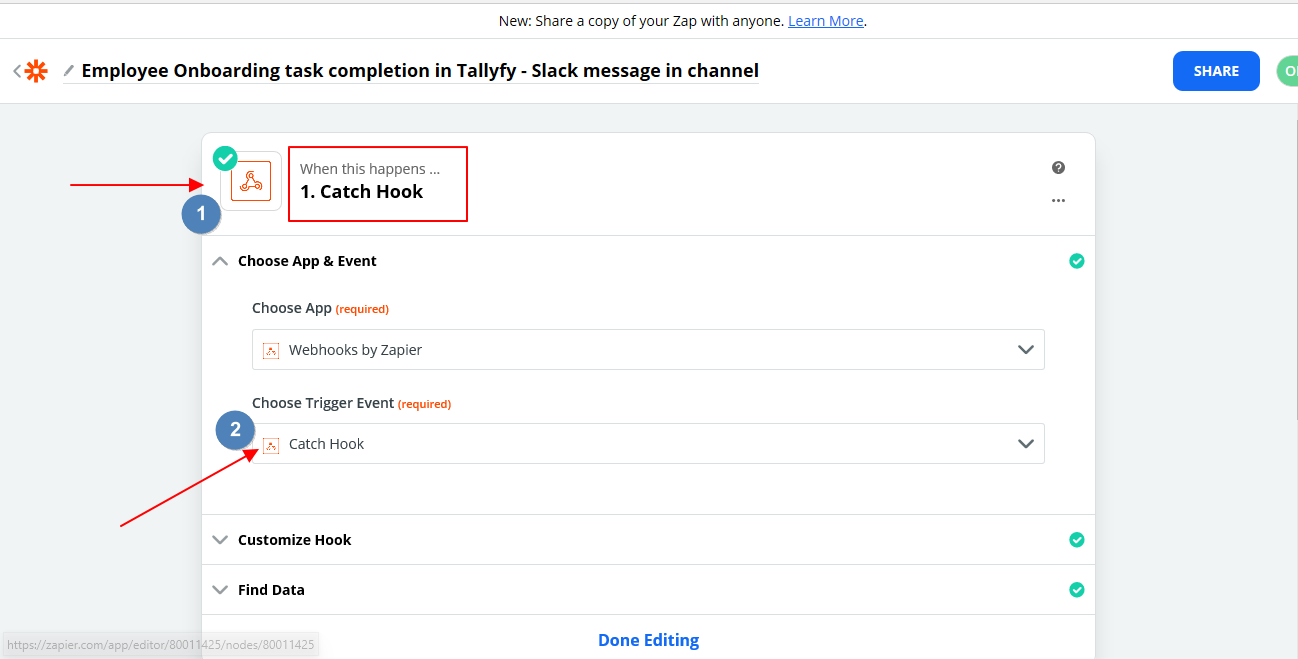
-
Copy the custom webhook URL provided by your middleware platform (you’ll need this for Tallyfy)
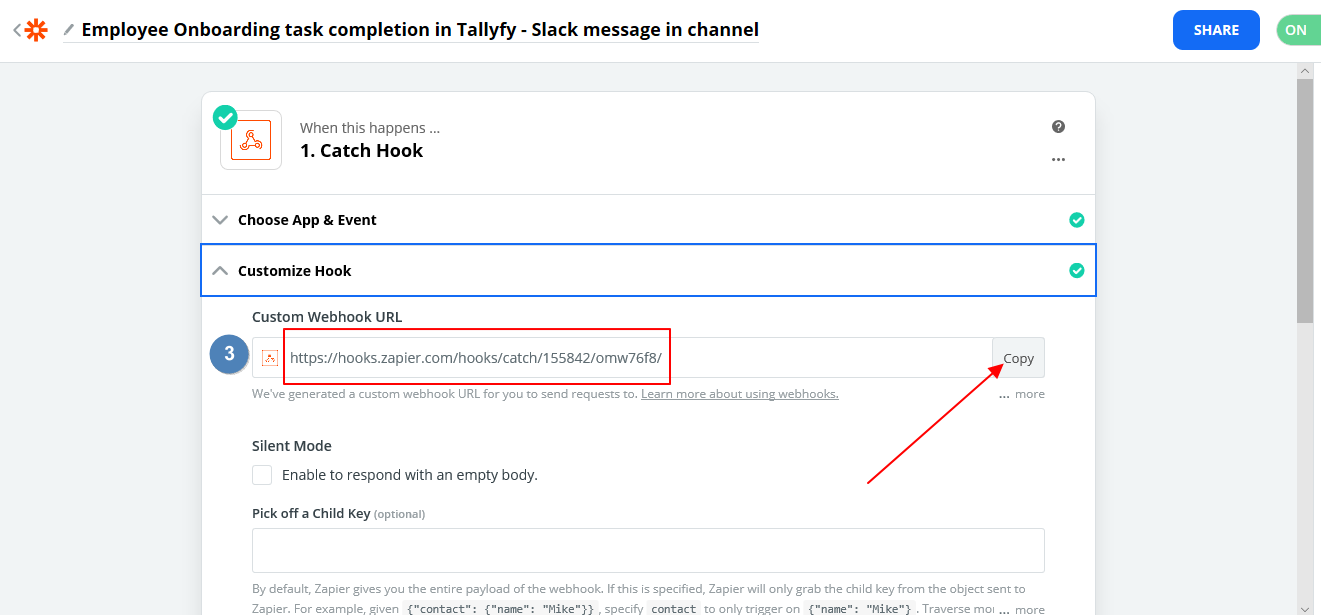
-
Add an action step to your workflow.
-
Select Slack as the action app.
-
Choose Send Channel Message as the action event.
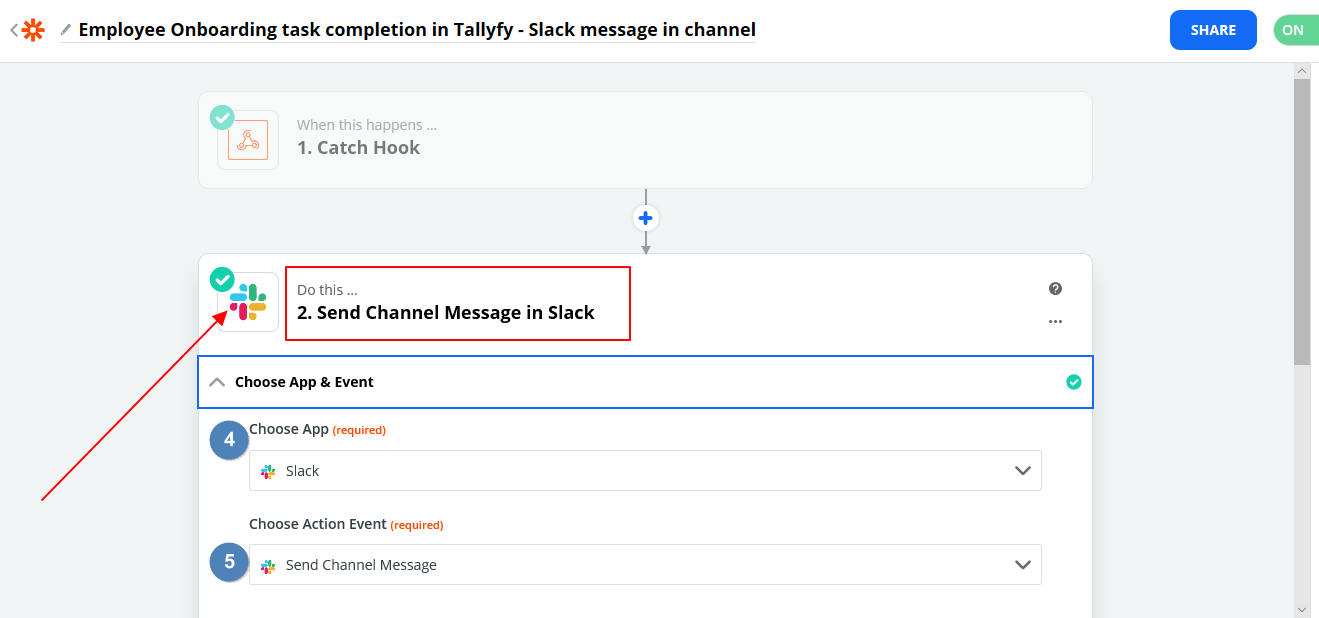
-
Connect your Slack account if not already connected.
-
Select the destination channel (e.g., #general).
-
Create a message template using webhook data.
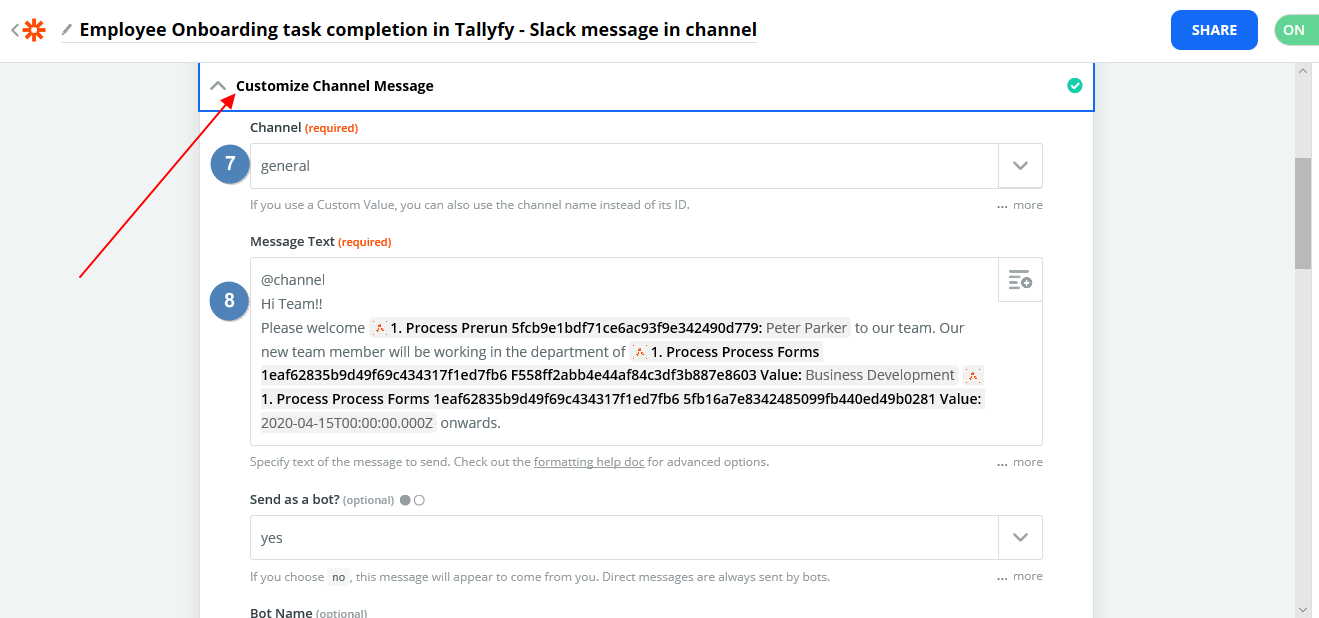
-
Include relevant details like process name, step name, and assignee in the template.
- Navigate to your onboarding template in Tallyfy.
- Enter Edit mode.
- For template-level notifications, open the Advanced Settings drawer.
- Toggle webhooks on within the Advanced Settings.
- Paste the middleware webhook URL into the Template webhook URL field.
- For step-specific notifications, select the final onboarding step.
- Open the Advanced tab for that step.
- Toggle webhooks on within the step’s Advanced tab.
- Paste the middleware webhook URL into the step’s webhook field.
- Save your changes.
-
Run your onboarding process
-
Complete the relevant step
-
Verify that the notification appears in your Slack channel
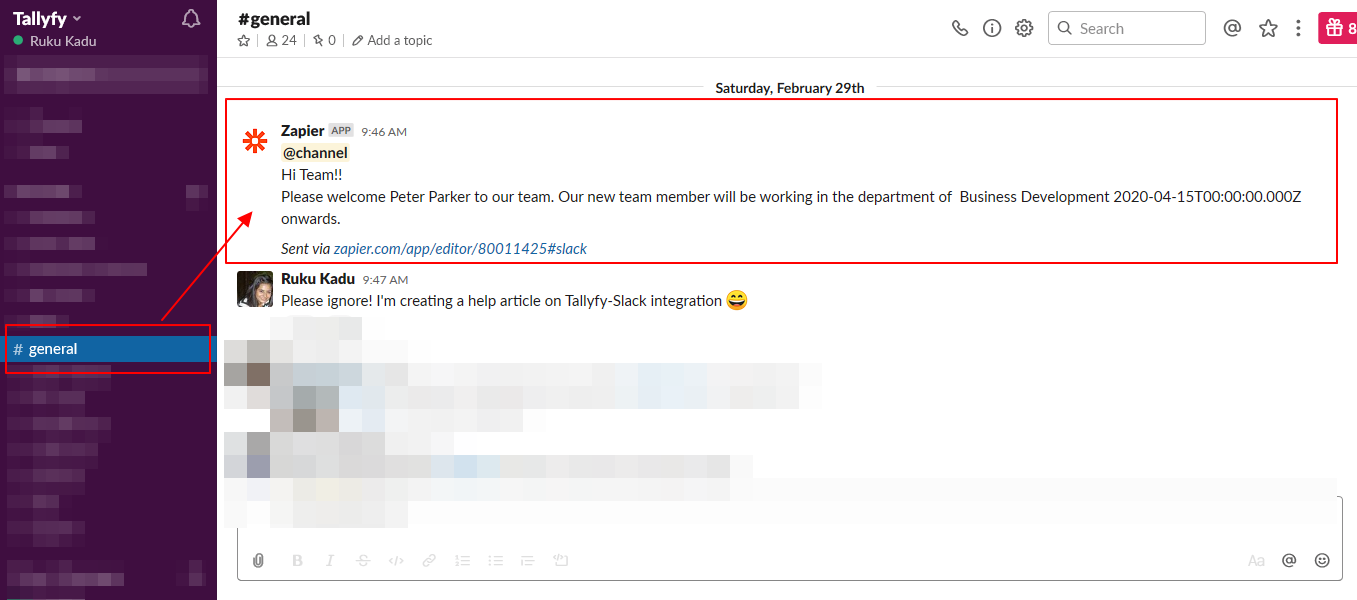
For webhook security, Tallyfy includes the X-Tallyfy-OrgID header in all webhook requests. You can use this header to verify that incoming webhooks are legitimate by checking against your organization’s ID - you definitely don’t want to process random webhook spam.
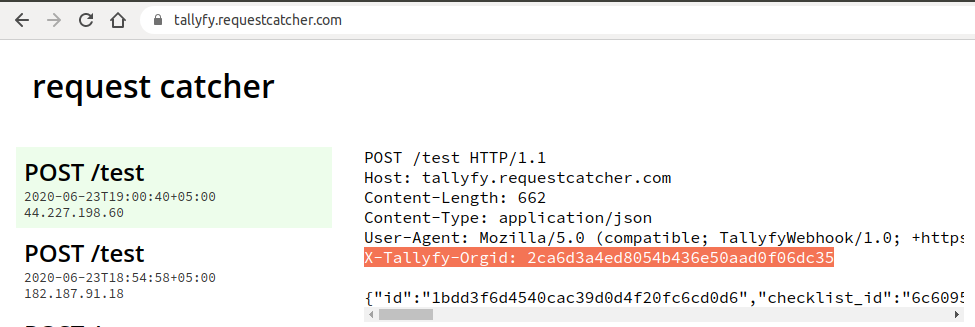
Important: Handle duplicate webhook events
Webhooks can fire multiple times for the same event. For example, when a task is completed and then reopened and completed again, you’ll receive multiple webhook notifications. Always implement idempotency handling to prevent duplicate actions in your integrated systems. Handling duplicates from the start is much easier than debugging why things ran twice later.
Webhooks not firing? Here’s how to diagnose:
- Verify the URL is correct - Copy and paste it fresh, don’t type it
- Check URL accessibility - Test your webhook URL with a tool like RequestBin or Postman first
- Confirm webhook is enabled - Both the toggle AND the URL field must be set
- Test with a simple receiver - Use webhook.site or RequestBin to verify Tallyfy is sending data
- Check for HTTPS - Many webhook receivers require HTTPS, not HTTP
- Look for authentication requirements - Your receiver might be rejecting unauthenticated requests
- Verify process completion - Webhooks only fire when steps are actually completed
- Check retry attempts - Look for delayed delivery (1, 5, 15 minutes after initial failure)
- Use HTTPS URLs for webhook destinations (HTTP is asking for trouble)
- Implement webhook authentication in your receiving system
- Test webhooks thoroughly before relying on them in production (seriously, test them)
- Monitor webhook delivery using your middleware platform’s logging tools
- Consider implementing retry logic for failed webhook deliveries
- Use webhook.site or RequestBin for initial testing before connecting to production systems
- Always validate the payload structure - external systems change without warning
Webhooks > Send emails using webhooks
Webhooks > Webhook payload structure
Was this helpful?
- 2025 Tallyfy, Inc.
- Privacy Policy
- Terms of Use
- Report Issue
- Trademarks